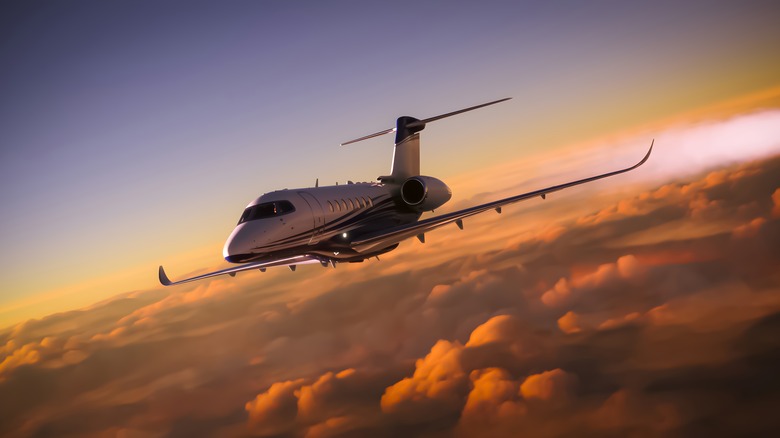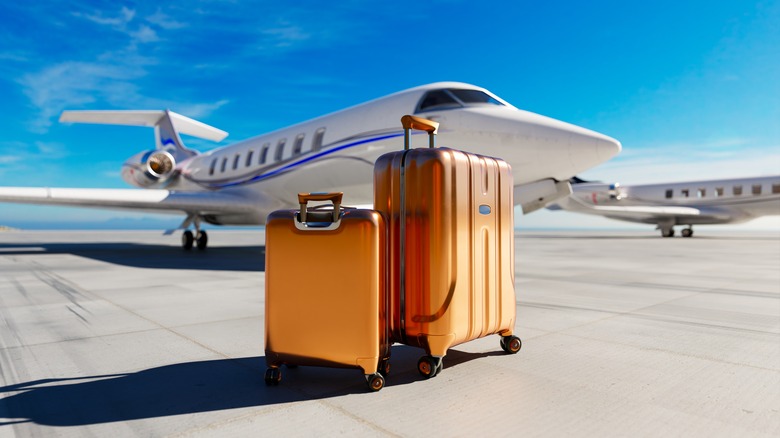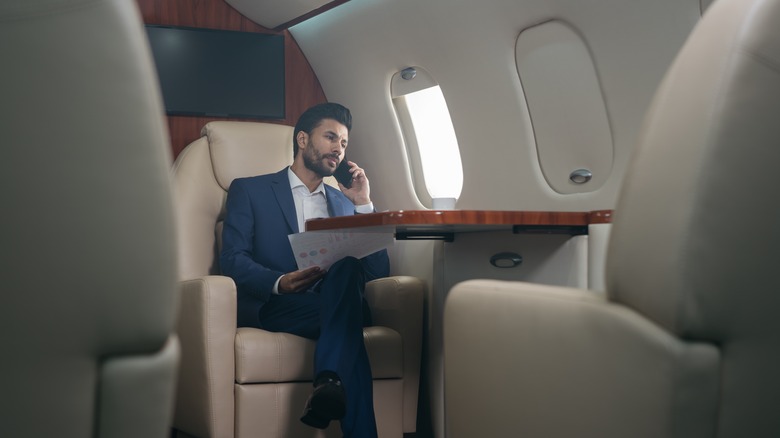Here's How Safe Private Jets Really Are
If you fly frequently, you know that air travel is not nearly as fun as it might seem. Long lines, crowded airports, endless delays, and lost luggage are just a few potential frustrations that come with flying — for regular people, that is. The rich and powerful don't really have to deal with any of these issues because they use private jets.
Estimates vary, but data suggests that there are well over 20,000 private jets in the world. The vast majority of them are registered in the United States. These are astronomical numbers, especially when you consider how much it costs to own a private jet.
There is a common misconception that private jets are not as safe as regular airliners, but that's all it is — a misconception. While private jet owners may not have to deal with the typical headaches of commercial air travel, they definitely have to take safety seriously. In fact, private jets must adhere to the same safety regulations as commercial aircraft, and many private jet operators go above and beyond to ensure the safety of their passengers.
How air travel is regulated
It is common knowledge that air travel is by far the safest mode of transportation, and that's partly due to the strict regulatory frameworks in place across the globe.
All air travel in the U.S. is primarily regulated by the Federal Aviation Administration (FAA). Similar regulatory bodies exist around the world. The European Union Aviation Safety Agency (EASA) plays the same role across the pond, for example. All countries have their own Civil Aviation Authority (CAA), and there's also the International Civil Aviation Organization (ICAO), which is an agency of the United Nations.
There are several other important institutions that develop policies, impose regulations, and set standards for air travel. This also applies to private jets. Operating within these guidelines is obviously necessary, but far from easy, particularly in the context of international air travel. For instance, when a private jet flies from the U.S. to Europe, it must comply with both FAA regulations and EASA standards, as well as any other rules set by the countries and territories it flies over.
Are private jets safer than commercial airliners?
In some ways, private jets are even safer than commercial airliners. Private jets typically fly at altitudes between 41,000 and 45,000 feet, while commercial jets fly at around 35,000 feet — flying at higher altitudes reduces the likelihood of encountering turbulence. Private jets usually have their own dedicated crews who are familiar with the aircraft, which can improve operational safety. They also guarantee better security, as the owner has full control over who they are flying with.
The structural and design differences between private jets and commercial airliners are also worth noting. Take the Gulfstream G700, for example. Equipped with premium technology, the Gulfstream G700 is one of the fastest private jets today. It can fit 19 passengers, and has an interior length of 63 feet and 8 inches, with a width of 8 feet and 2 inches. An aircraft like this is far more agile than your typical commercial airliner, which makes it easier to deal with turbulence and avoid extreme weather.
Most importantly, private jets undergo regular maintenance and inspections that sometimes exceed regulatory requirements. It is not uncommon for private jet operators to employ in-house maintenance teams, while pilots and crew typically go through advanced safety training.


